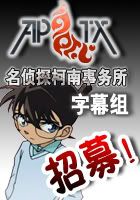主题
最后登录1970-1-1
回帖0
精华
积分1735
威望
RP
金钱 柯币
人气 ℃
注册时间2003-10-14
|
 发表于 2005-10-28 18:44:59
|
显示全部楼层
发表于 2005-10-28 18:44:59
|
显示全部楼层
回复: English Chatroom (想练习英语的就来啊^^)

Good morning, everyone here. Today my topic is Snooker, one of my favorite sports games.
Snooker is a billiards sport that is played on a large baize-covered table with pockets in each of the four corners and in the middle of each of the long cushions. It is played using a cue, one white ball, 15 red balls and 6 colours: a yellow, green, brown, blue, pink and black ball worth from two to seven points. A player wins a frame of snooker by scoring more points than his opponent, through using the white ball to pot all the red and coloured balls. A match consists of an agreed number of frames. Snooker is particularly popular in English-speaking countries sucn as Britain, Ireland, Canada, Australia, India and South Africa, and there has recently been a surge of interest in East Asia, with players from Thailand and China entering the rankings.
The game of billiards dates back to the 15th century but snooker is a more recent invention. In the late 19th century billiards games were popular among British army officers stationed in India and players used to experiment with variations on the game. The most commonly accepted story is that, at the officers' mess in Jubbulpore in 1875, Colonel Sir Neville Chamberlain, who has no relation to the later Prime Minister, suggested adding coloured balls to a billiards game. The word 'snooker' was army slang for a first-year cadet. This came to be used for novices to the game, and eventually for the game itself. British billiards champion John Roberts travelled to India in 1885, where he met Chamberlain. Chamberlain explained the new game to him, and Roberts subsequently introduced it to England.
Snooker championships date back to 1916. In 1927, Joe Davis, by far the best player of the time, helped establish the first professional world championship, and won its prize of £6.10, which is equivalent to about £200 today. He went on to win every subsequent world championship until 1946. The trophy he donated all those years ago is still awarded to the world champion.
Snooker suffered a decline in the 1950s and 1960s, so much so that no tournament was held from 1958 to 1963. In 1969, the BBC, in order to demonstrate their new colour broadcasts, launched a new snooker tournament, called Pot Black. The multi-coloured game, many of whose players were just as colourful, caught the public interest, and the programme's success wildly exceeded expectations. Ted Lowe, the commentator famous for his whispering delivery, was the driving-force behind Pot Black, which survived until well into the 1980s.
In the early 1970s, the world championship received little TV coverage. However, in 1976 it was featured for the first time and very quickly became a mainstream professional sport. World rankings were introduced in 1977. Money poured into the game, and a new breed of player, typified by Steve Davis, young, serious and dedicated, started to emerge. The first televised maximum break of 147 was achieved in 1982 by Davis. The top players became sterling millionaires. There was even a comic snooker song in the pop charts: Snooker Loopy by Chas & Dave.
Perhaps the peak of this golden age was the world championship of 1985, when 18.5 million people watching BBC2 saw Dennis Taylor lift the cup after a mammoth struggle against Davis that finished with the potting of the last possible ball, well after midnight on a Sunday night. To this day, polls rank the 1985 World Snooker Championship final amongst UK TV's most memorable all-time moments.
Snooker remains immensely popular in the United Kingdom, second only to soccer amongst television viewers.
Before finishing my speech, I want to introduce some common snooker equipments to you all.
² Chalk: A small cube of chalk used in rubbing the tip of a billiard or pool cue to increase its friction with the cue ball.
² Cue: A long tapered rod with a leather tip used to strike the cue ball in billiards and pool.
² Extension: A shorter stick that fits over the back end of the cue, effectively lengthening the cue. Used to facilitate shots where the cue ball is a long distance from the player.
² Rest/Bridge: A stick with a cross-shaped head that is used to support the cue when the player's arm is too short.
² Spider: Similar to the rest but has an arch-shaped head; it is used to elevate (and support) the tip of the cue above the height of the cue ball.
² Swan: Rarely used - the swan has a single extended neck with a fork-like prong at the end to give extra distance over larger obstructions.
² Triangle: The piece of equipment used for gathering the balls into the formation required by the game being played. Also known as a rack. |
|